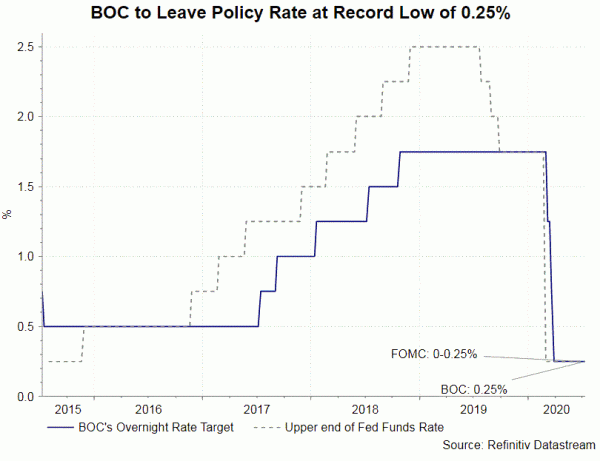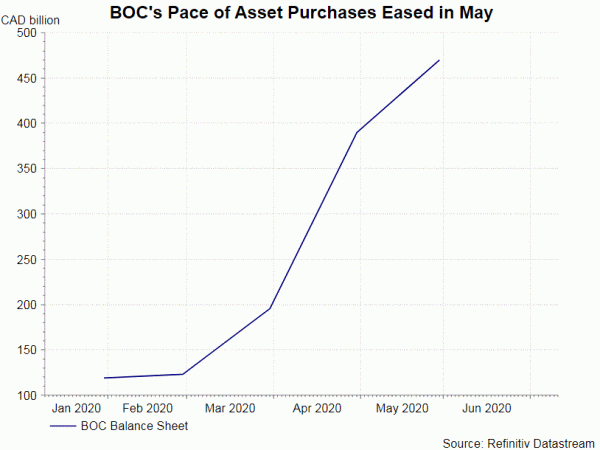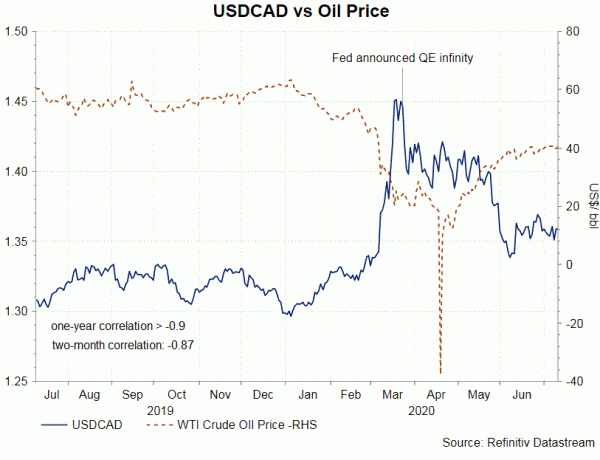At the BOC meeting this week, we expect new Governor Tiff Macklem to continue Stephen Poloz’s legacy and leave the policy rate unchanged at 0.25%, the effective lower bound. The asset purchases programs (QE) will also be maintained. Canada’s reopening since the June meeting has largely been smooth. Economic data released since then have also been encouraging. We expect policymakers to sound more optimistic about economic developments that the June meeting. Yet, they would also remain cautious, warning of the highly uncertain outlook of the coronavirus pandemic.
As the increase in coronavirus cases has shown signs of moderating, provinces and territories in Canada are gradually reopening economic activities. The Ivey/ Markit PMI report shows that economic activities returned to expansion in June. The index jumped to a seasonally adjusted 58.2 in June, from 39.1 a month ago. This marks the highest level since November 2019. Most sub-indices including employment, supplier deliveries and inventories also improved significantly. On a separate report, the Markit manufacturing PMI improved to 47.8 in June, from 40.6. While staying in the negative territory, the survey shows “vastly improved situation in comparison to that seen over the previous three months”.
The job market also improved. In June, the number of payrolls soared +852.9K, beating consensus of +700K increase and the +289.6K addition a month ago. Both full-time and part-time jobs rose considerably. The unemployment rate eased -1.4 percentage points to 12.3% in June. The fall in the unemployment rate was encouraging given the participation rate also improved +2.4 percentage points to 63.8% in June. On inflation, headline CPI contracted -0.4% y/y in May, worsening from -0.2% a month ago. The market had anticipated a flat reading. The disappointment was mainly driven by the decline in gasoline prices which plunged -29.8% y/y. From a month ago, gasoline prices rebounded + 16.9%. Core CPI also decelerated to +0.7% y/y from +1.2% in May. BOC’s three core inflation gauges averaged +1.7%, compared with +1.8% in April.
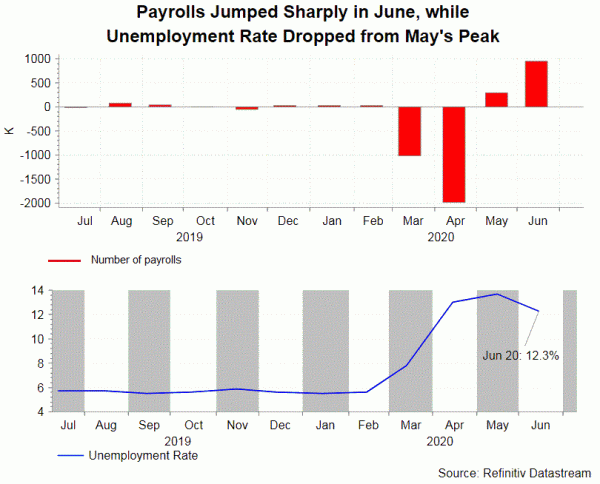
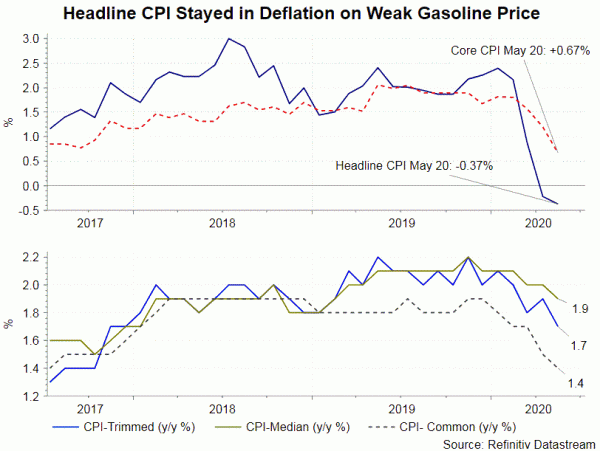 Against this backdrop, we expect policymakers to sound cautiously optimistic about the economic recovery while stressing persistent slack and weak inflation. Given the highly uncertain developments in the pandemic, BOC offered two scenarios for the economy back in the April meeting. In June, the members judged that impacts of the pandemic on global growth have “peaked” and Canada has avoided the most severe economic scenario. BOC will resume the release of its updated economic forecasts this week, first time since January.
Against this backdrop, we expect policymakers to sound cautiously optimistic about the economic recovery while stressing persistent slack and weak inflation. Given the highly uncertain developments in the pandemic, BOC offered two scenarios for the economy back in the April meeting. In June, the members judged that impacts of the pandemic on global growth have “peaked” and Canada has avoided the most severe economic scenario. BOC will resume the release of its updated economic forecasts this week, first time since January.
On the monetary policy, BOC is expected to leave the policy rate unchanged at its effective lower bound of 0.25%. It should also maintain its federal, provincial and corporate debt programs unchanged, pledging that these large scale asset purchases will continue “until the economic recovery is well underway”. Implications on the movement of Canadian dollar are likely mild and short-lived as the direction of loonie is mainly driven by oil prices and economic recovery.




